Nikon D850 Review
The Nikon D850 is supposedly sporting a brand new sensor, and one that is not designed by Sony. When I first learned this, I was a bit apprehensive. Even though some functionality hasn’t been for me, I think there’s little denying that Sony is the camera manufacturer doing the most to push the envelope in terms of technology and innovation.
Fortunately, this sensor is incredible. Perhaps it’s a non-Sony sensor with a wink and a nod…still produced in the same factories with the same technology. Whatever the case, if someone hadn’t told me, I would’ve guessed this were a Sony sensor. According to Nikon, the D850 sensor performs up to one stop better than the D810, despite the higher pixel count.
While I’m not so sure about that claim, I will say that the Nikon D850 produces some of the best images I’ve ever seen. Having ISO 64 as a base helps with already-exceptional dynamic range. Just as importantly, ISO 64 enables you to use a slower shutter speed or wide open aperture in bright light without using neutral density filters. For me, this also enables longer exposures for fireworks without using a neutral density filter.
Likewise, the increased native ISO of 25,600 is a big plus. Before, both the D750 and D810 maxed out at a native ISO of 12,800. (Expanded ISO is software-based, and therefore, useless.)
Even before getting to ISO 25,600, it’s clear the high ISO performance has been improved here. It’s noticeably better than the D810 at ISO 6400 and above, and marginally better than the D750 at the same levels.
ISO is the clearest metric for “measuring” sensor performance since Nikon actually assigns a number to it. Color rendition, detail, and dynamic range are more challenging, especially for ‘testing’ in real world shooting scenarios.
Even when pixel-peeping on photos from the Nikon D850 that I’ve really pushed in post processing, the color and dynamic range results both look spectacular. Paired with my tack-sharp Sigma 35mm f/1.4 lens (my review), I’ve been blown away by this camera. I’d go as far as to say that the Nikon D850 produces the nicest photos of any Nikon DSLR ever.
The problem, if you want to call it that, is that I could’ve said the same thing about the Nikon D600, D750, and D810 when each of those were released. To date, the first of those cameras had presented the biggest leap in terms of sensor quality, and that remains true.
The Nikon D850 once again offers an incremental improvement in image quality, but it is definitely not a game-changer in that regard. If you already have a D600 or higher, you’re only going to see minor gains in terms of what the sensor can deliver.
It seems to me that we are near the ceiling of what full frame DSLR sensors can do, and have been there for a few years. As lower-level tech makes tremendous strides packing greater quality into small sensors (I just moved from an iPhone 6 to an iPhone 8 Plus and that is a revolutionary camera!), DSLR sensors are doing less to move the needle.
Honestly, I’m not sure what major improvements are left to be made with DSLR sensors. We’re already at a point when raw files can have their exposure adjusted by 4-5 stops and still be usable.
Let that sink in…a photo that’s underexposed to the point of complete darkness can still be salvaged. If you have that and still need more, what you need more of is photography lessons, not a better sensor. The overall flexibility and quality of the Nikon D850’s raw files is astounding.
(One thing I did notice while editing some files in Adobe Camera Raw was that the highlights adjustment tool was adjusting a lot more than just the highlights. I think this likely has to do more with Adobe having to create an update to handle these raw files on short notice than anything else. I cannot imagine it has anything to do with the camera itself, but still something worth noting for early adopters.)
My main hope prior to acquiring the Nikon D850 was that the best aspects of the D810 and D750 sensors would be merged, and that’s exactly what happened. The Nikon D850 has ISO 64, incredible dynamic range, great color rendition, and exceptional high ISO performance all in one package. It cherry picks the best of each of those cameras, and enhances them a bit.
Whether this is good or bad is largely a matter of expectations and needs. If you already have a Nikon D750 and don’t have a “complete” lens lineup, I’d definitely prioritize that, especially if you don’t find yourself wanting for higher resolution, a lower base ISO, or other features. For me, the image quality improvements the Nikon D850 offers are icing on the cake.
The proverbial cake with the Nikon D850 is its features that don’t necessarily have an impact on the final image. The first of these is its autofocus. Prior to the D750, Nikon DSLRs never really measured up to Canon on the AF front. I felt that the Nikon D810 was a step in the right direction in this regard, with the Nikon D750 being a jump forward.
Well, the Nikon D850 is like a quantum leap forward. This is the same no-nonsense autofocus system in the Nikon D5, with a total of 153 focus points and extreme low-light sensitivity. I’ve never used that $6,000+ camera, but the fact that one of its biggest selling points has trickled down to this camera is huge. Oh, and the Nikon D850 shoots at 7 fps.
In the past, the Nikon D800 line was aimed at landscape photographers, through and through. The Nikon D850 could also be a sports, wildlife, or Peter Pan’s Flight camera, whatever your particular style of action shooting might be. I found the D850 really delivered on dark rides. I only wish I had it when photographing the Boo to You Parade a couple weeks ago!
The LCD screen is another major jump forward for me. Not only is it a higher resolution, but it’s also an articulated (tilting) touchscreen. The ability to tilt is something about which a lot of “serious” photographers don’t care, but I shoot low to the ground a lot, and the Nikon D810 lacking a tilt screen was one of the biggest reasons I’d grab my Nikon D750 instead of the D810. This is a huge gain for me.
The touchscreen is nice for zooming in when reviewing images, but it’s not a must-have for me. To be honest, in my first week of using the camera, I’ve found myself accidentally touching the screen and zooming in and doing other things I didn’t even intend upon doing. Presumably, I’ll grow more comfortable with it over time. Maybe I’ll also grow to love it and view it as an indispensable feature. As of right now, I consider it a minor feature and occasional headache.
The Nikon D850 viewfinder, which is larger and brighter than the D750, is another gain for me. The battery life is also superior to past full frame Nikons, with the D850 capable of over 1,800 shots on a single charge.
It should come as no surprise that the Nikon D850 is built like a tank. As with its predecessors, the D850 has a full magnesium-alloy frame and feels incredibly sturdy. I love the new joystick for changing the focus point, and the addition of the F2 button on the back (which I use for accessing the top item–ISO settings–of ‘My Menu’) is a huge plus for me. Backlit buttons are also something I never knew I needed before using this.
Finally, there’s that intangible x-factor, and this may just be personal to me: the Nikon D850 is that it just feels right. Despite being slightly larger, the form factor on the Nikon D850 is nicer than on the D810 or D750. I really like the deep grip, which is really comfortable to the hand.
Despite the addition of several buttons that I’ll need to commit to (muscle) memory, I’ve already found the Nikon D850 easy to control even while looking through the viewfinder. As simple as it might sound, this camera just feels right to me. This was a huge hangup for me with the Sony A7R II, so it’s something to which I’ve become particularly cognizant, I guess.
It should be pretty clear that the Nikon D850 is an impressive camera. It’s the best camera I’ve ever used, surpassing the Nikon D750 & D180 and the Sony A7R II in objective measures focused around image and sensor quality. More importantly, to me at least, it’s the most well-rounded camera I’ve ever used. While landscapes are my focus, I do a variety of other shooting, and I also see the D850 being pretty well-suited to weddings, portraiture, and more.
The question thus becomes one of who the Nikon D850 will best suit. First and foremost, anyone looking for the absolute best DSLR quality. And this runs the gamut–I see little reason for most people to buy a Nikon D5 or any pro-grade Canon DSLR (aside from those heavily invested in Canon lenses). Likewise, anyone wanting to go full frame with the budget for a $3,000+ camera should buy the Nikon D850. Those are the two obvious groups that should buy this camera without any hesitation.
As for closer calls, what about current owners of the D600 and above? As I hinted at above, I think it really depends upon your budget and where you stand in terms of a lens lineup. If you are primarily looking for a bump in image quality, I’m not so sure the Nikon D850 is a good purchase. It does offer an improvement, but that is incremental and a tad difficult to justify. If your camera bag is not yet “complete” (when is it ever?!), a new lens or two will likely have a bigger impact on your photos.
If you’re not so concerned with leaps in image quality and have a strong stable of lenses, the Nikon D850 is very much worth considering. While side-by-side images of a landscape shot from a tripod during golden hour might be indistinguishable, there are other situations where the Nikon D850 will enable you to capture great photos you otherwise might’ve missed. Situations where fast autofocus or high ISO performance might matter. Whether it’s photographing a bald eagle or Mr. Toad’s Wild Ride, your chances at success are improved with the Nikon D850.
This is the principle upside of the Nikon D850, and something that’s impossible to measure with lab charts. The best technology fades into the background, “getting out of the way” of the photographer trying to capture a scene. The Nikon D850 presents fewer technological hurdles, meaning your chances of nailing a photo in tough conditions are improved. It also has a feature-set that does a better job of facilitating photo-taking. The downside to this is that the “blame” is entirely yours when you mess up a shot, but I’d personally rather be at fault when screwing up a shot than have the camera come up short.
Overall, I know that seems like a lot of equivocating in terms of a recommendation, but I just sort of wanted to put the brakes on a bit with a realistic take on the Nikon D850, as I know we all develop mild (or not-so-mild) cases of Gear Acquisition Syndrome whenever the newest toy is announced. Personally, the answer to whether the Nikon D850 is a worthwhile purchase for me is an easy and emphatic “YES!” The Nikon D850 is one of the greatest cameras I’ve ever held, and its new features and merging of two cameras I previously loved will make photography easier and more fun for me, and also put me in a position to miss fewer shots. For me, the slight sensor gains, excellent autofocus, and the other new and improved features all make the Nikon D850 a grand slam for me.
If you do want to purchase the Nikon D850, we recommend ordering it from Amazon or B&H Photo. (Ordering via these affiliate links helps support the site and doesn’t cost you anything!)
The one piece of bad news if you’re thinking about ordering the Nikon D850 is that it’s backordered everywhere for the next 2 months. There’s an unprecedented amount of demand for this camera, and that coupled with Nikon’s slow production means long waits. On the plus side, if you’re on the fence, you can always place an order now, think about it for a few weeks, and then make a decision (none of these online retailers charge your credit card until the item ships).
Want to learn more about photography to take great photos in the Disney theme parks and beyond? The best place to start is Tom’s Ultimate Disney Parks Photography Guide, which covers a variety of topics from links to tutorials, tips, and tricks to recommendations for point & shoots, DSLRs, lenses, and more!
Your Thoughts…
If you’ve used the Nikon D850, what did you think of the DSLR? Are you interested in the Nikon D850? Have you already bought it? Have any additional questions or comments about the camera? Please ask or share below, and I’ll offer my feedback!
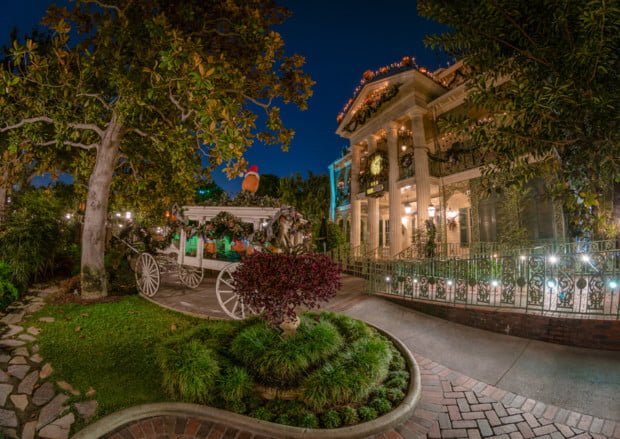
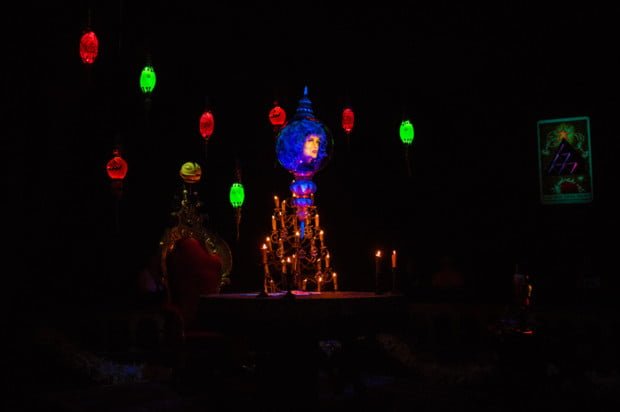
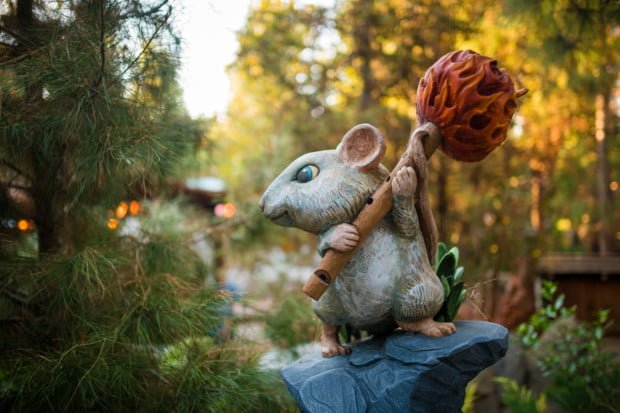
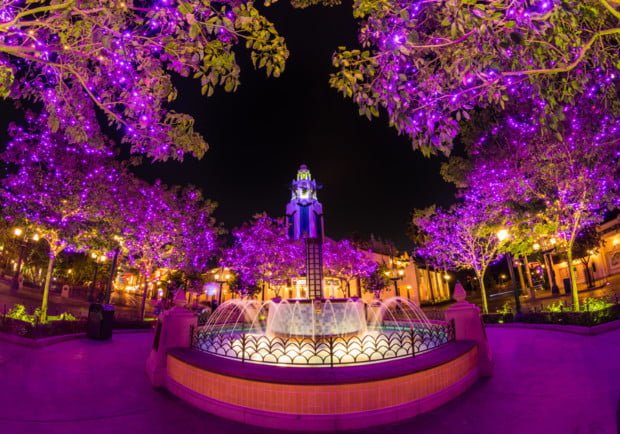
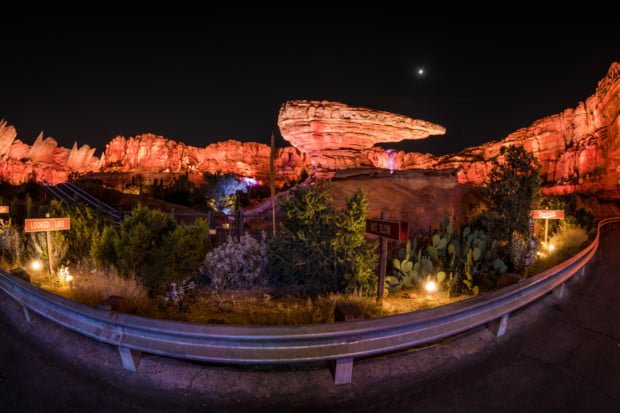
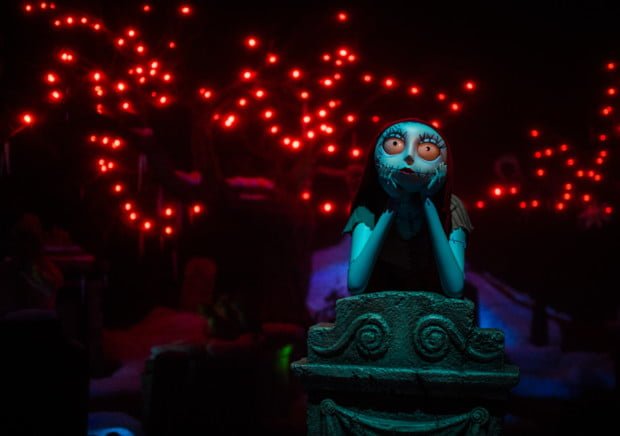
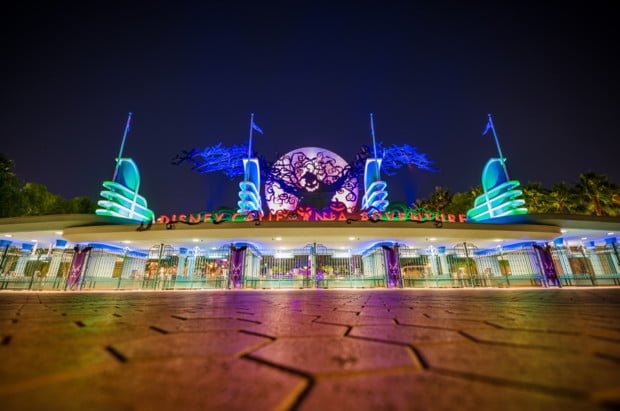
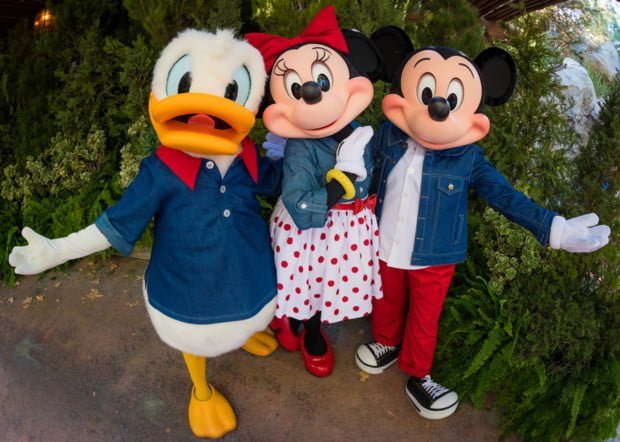
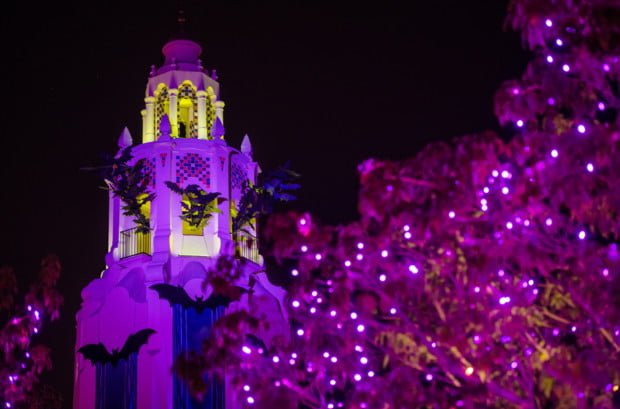
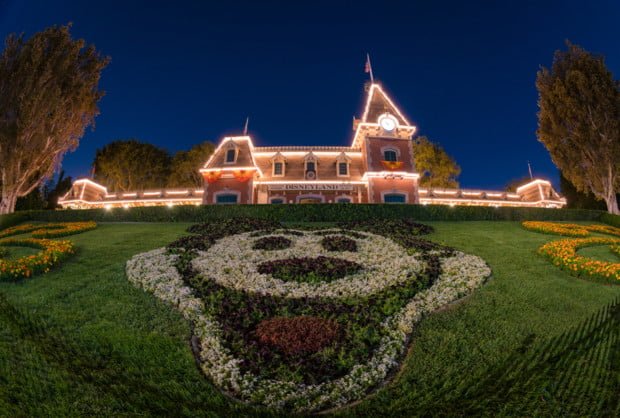
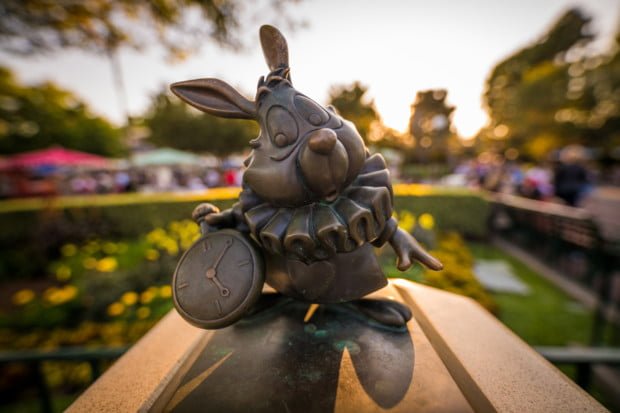
Thank for the great review Tom , I was really looking forward to read it!
So, speaking of mRAW and sRAW files, I still have few doubts about it: as far as I understood we will get 12 bit RAWs, less detailed than original RAWs but with the same dynamic range as original files, is it correct?
Still cannot understand how and why the raw compression can affect sharpness and detail as seen in your test!
I was a dyed in the wool canon for 30 years. No more. I am slowly jumping ship. Funny thing is, it’s not the hot new body, it’s that the d810 will now be all over for like $700 bucks. I will start there. Thank you for the real world review. Disney is a great proving ground.
Great review. I received my D850 a few days ago, (right after I completed three Disney trips of course). I’m still getting used to the increased resolution over my D750. Every lens flaw becomes noticeable and every facial blemish is exposed. It’s total overkill for my photography hobby. I love it.
Great real world review of the D850 for those of us who are not pixel peepers. If I had an unlimited budget who wouldn’t want one, but in reality I’m hoping there will be deals come holiday season for the D750 or if its an amazing deal even the D610. The body only prices on the D750 are getting lower and even the F4 kit prices are almost under 2k. Unless there is some amazing product announcement around the corner I’m thinking it now might be the time to make the jump to FF, and still have money left to get something like the 35mm art.
Mine has been on order for a month now and I doubt I will have it for my Oct 10th trip. I wonder if I will see you again shooting the Mine Train. 🙂
You think you might go back to team sony with their newer a9 trickle down a7 cameras coming out soon? They seem to have fixed the autofocus, battery life and now have gm 2.8 pro lens.
Probably not. It has nothing to do with Sony, and everything to do with the fact that I just dropped serious money on two new lenses and a Nikon body.
Sony has made some positive strides since I jumped ship on mirrorless, and I still feel like it has more potential for future growth than DSLRs, especially in terms of getting smaller in size. Unfortunately, I’m in a position right now where the Nikon DSLR is likely what I’ll be using for at least the next 3 years.
Sony has done a ton to innovate in the last ~5 years, and I’m really eager to see what else they do, though. I’ll just be watching from the sideline…
Tom…thanks for triggering me. As a d610 owner, lowlight and AF in general have always been my gripe. The 850 is tempting, but so is the 750. Decisions…Decisions…
Tom, why do you think the higher resolution didn’t affect hand holding as much in the D850? Are you using electronic first curtain? I dumped a huge Canon system last year and now have a D500 and A7Rii with which I am currently playing. Love aspects of both. A bit of analysis paralysis right now. Very tempted by D850 but also interested in Sony’s next move.
Thanks for the review. I had a D850 on pre-order and then cancelled it. I’m still on the fence and tempted…
I just don’t see it as the “best of the D750”— my current main camera.
To me, the advantages of the D750 over the D810:
– Price (obviously)
– Smaller size/weight
– Smaller files (why pay for 36/46 mp if you aren’t going to use those pixels?)
Putting aside the price…. the weight and file sizes really scare me off. As a secondary concern, I’m unhappy that Nikon is the only brand left that doesn’t utilize a truly good live view af system.
I’m hoping we see a true D750 replacement — that shrinks down the D850 into a smaller body, with a high performing 24-28mp sensor.
The price and weight are definitely there, and today when picking up my Nikon D750 (to take the top photo in this post!) after a few solid days of using the D850, I could definitely feel the difference. I would love to see DSLRs get smaller/lighter, but I’m not sure that’s even possible with added features. Live view AF is still lacking, but the focus peaking feature is a nice gain.
The file size issue can be solved by using the mRAW and sRAW options selectively. I think that’s a ‘best of both worlds’ approach, as there were situations in the past when I carried both cameras to leverage the smaller and larger sizes in the past.
Everything I’m seeing points to this camera being a merger of the D700 & D800 product lines. Between there being no rumors of anything else on the horizon to what this camera does, it just seems unlikely. It’s also quite possible the Nikon doesn’t have the factory capacity or resources to produce both.
With decreased demand, you may be right about the merger. But I hope you’re wrong.
-I’ve been doing enough paid word that I can rationalize the price of the D850 — But $3000+ is still a different league than the $2300 D750.
-You absolutely could make the camera smaller and lighter and preserve most of the goodies. Ok, the viewfinder might not be quite as big. And maybe no XQD slot. And maybe the LCD would have to be a tiny bit smaller. But you should be able to put most of the D850 goodness into a D750 body. And while I know you had issues with the Sony mirrorless…. they are becoming more and more appealing, as less weight. (With how I’ve been shooting lately….. give me a Sony mirrorless with their 12-24, 55/1.8 and 85/1.8… and I’m good to go!). Even the Canon 5div shrunk down from the 5diii. I think the D850 is the biggest heaviest dSLR on the market among newer offerings other than the D5 and 1dxiii. (the built in grip cameras).
-mRaw and sRaw was part of the reason I did pre-order the camera. But then as I thought about it…. It is exceptionally rare I would really crave 46mp. I’d use mRaw 95+% of the time…. and I’m fine with 24mp 100% of the time. It’s just less than 5% where I’d consider maybe using the more MP if they were there. So yes… I can use the mRaw… but why buy a Ferrari just to drive it to the supermarket?
If they basically release a compromised 24mp version of the D850.. just like the D750 is a compromised version of the D810 (consumer body, less MP)… then why pay the extra $1,000 for MP that I’m not going to use?
Who knows… I might end up with the D850. But I’m going to wait 3 months or so…. see if a D760 is on the horizon. See what Sony does with a A7iii.
Thank you for the detailed review! This is so helpful. I think I’ll stick with my D750 for now.
Not a bad decision. The D750 is an incredible camera, and if you don’t need the features the D850 offers, no reason to shell out the additional money!
Well, now that you have that new camera you need a new lens to go with it! A Nikon coworker of mine recently found a “deal” on a Nikon 600mm F/4 and he raves about it! It’s supposedly great for landscape photos, but might be a bit much for carrying around the park.
I have a D600 which I will have had 5 years come December and have debated upgrading it. It took me a couple of days to pull the trigger, but I ordered my D850 on August 29th…so now I am playing the waiting game to get mine since it is still showing back ordered. You review was enjoyable and sad to read – enjoyable since a lot of good information, sad since I still don’t have mine! I am heading to WDW in November for the Wine & Dine half (weekend trip) then back the 1st week of December for a full week. I hope I have it by at least the Christmas trip!
Unfortunately, I don’t have any good news for you on that front. I ordered my camera at like 1:30 a.m. Pacific, around an hour after the order pages went live, and mine was in the second shipment.
When inquiring about why mine didn’t ship with the first shipment, I was advised that Nikon was only providing very limited qualities, and it’d take through the end of October to get through pre-orders. Hopefully you’ll have yours before your November trip, though!
Aug 29th Order from Adorama = October 30th Delivery (I had my retired dad camp out to sign for it this morning) – just in time to leave on Thursday for Wine & Dine weekend!!!
Any chance i could talk you into doing a review of the 7500? I know its crop- but alot of us can’t swing the 3k plus for going to full frame.
Unfortunately, I don’t have the experience with that camera to do a review of it justice. I’ve heard nothing but good things, and have been impressed by every single camera in the D7000 line, though. (I used the D7000 for a couple of years and loved that camera.)
Thanks for the review. I was a little worried that your review might trigger a case of the dreaded Gear Acquisition Syndrome, but luckily it didn’t. I am planning on staying with the D750 for a few more years and completing my lens lineup like you suggested. I am ordering the Nikon 24-70 F/2.8 ED VR lens today so that should keep the G.A.S. bug at bay for a few months. While I may not be getting the D850 right now I clicked on the B&H Affiliate Link in your review to help pay for yours.
Todd